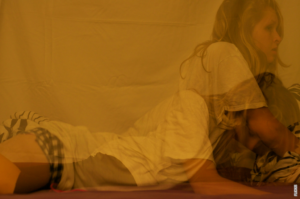The Inner Ear: A Space of Balance and Orientation
The vestibular system, a complex network of structures within the inner ear, is responsible for our sense of balance and spatial orientation. This remarkable system allows us to stand upright, maintain equilibrium, and move smoothly without feeling disoriented or dizzy.
The Three Main Components
At the core of the vestibular system are three main components: the semicircular canals, the otolith organs, and the vestibular nerve.
Semicircular Canals: Detecting Rotational Movements
The semicircular canals, resembling three interconnected tubes, are responsible for detecting rotational movements of the head. Each canal is filled with a fluid called endolymph. When we rotate our head, the movement of this fluid stimulates tiny hair-like structures called cilia, which are located at the base of the canals. These cilia convert the fluid’s movement into electrical signals, which are then transmitted to the brain.
Otolith Organs: Detecting Linear Movements
The otolith organs, consisting of the utricle and the saccule, are responsible for detecting linear movements and changes in head position relative to gravity. Within these organs, there are tiny calcium carbonate crystals called otoliths, which are attached to hair cells. When we move or change positions, the otoliths shift, causing the hair cells to bend. This bending generates electrical signals that are sent to the brain for interpretation.
Vestibular Nerve: Transmitting Information to the Brain
The vestibular nerve carries the electrical signals generated by the semicircular canals and the otolith organs to the brain. This nerve connects the inner ear to the brainstem, specifically a region called the vestibular nucleus. From there, the information is relayed to various parts of the brain, including the cerebellum, which plays a crucial role in coordinating movement.
Post
Post
Working in Harmony: Maintaining Balance
The vestibular system works in harmony with other sensory systems, such as the visual and proprioceptive systems, to maintain balance. For example, if we are walking on an uneven surface, the vestibular system detects the slight shifts in our body’s position, the visual system provides information about our surroundings, and the proprioceptive system informs us about the position of our limbs. All this information is integrated in the brain to generate appropriate motor responses that help us stay balanced and oriented.
Disorders of the Vestibular System
When the vestibular system malfunctions, it can lead to various balance disorders, such as vertigo, dizziness, and problems with coordination. These disorders can significantly impact a person’s quality of life, making simple tasks like walking or driving challenging. Vestibular rehabilitation therapy, which involves exercises and techniques to retrain the brain, is often used to treat these conditions.
Exploring the Wonders of the Vestibular System
The vestibular system is truly a marvel of nature. Its intricate design and precise functioning allow us to navigate the world with ease and grace. Whether we are climbing a mountain, dancing, or simply standing still, the vestibular system silently works behind the scenes, ensuring our equilibrium and providing us with a seamless experience of the world around us.



